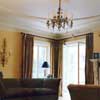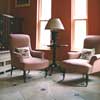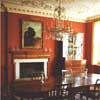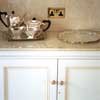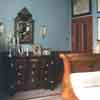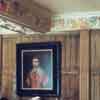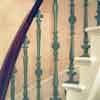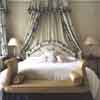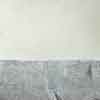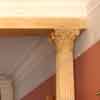traditional specialist decorators
We are London based specialist decorators and undertake all forms of decorative treatments using traditional materials and techniques. The craft of the traditional specialist decorator consists broadly of those methods and paint effects which have been in regular use for several centuries and are thus useful in the recreation and restoration of period interiors as well as schemes of historic decoration.
images for period and historic interiors
specialist decorator methods for historic Interiors
These finishes include techniques such as marbling, wood graining, stencil work, ornamental embellishment, gilding and paint effects such as dragging and glaze and wipe. In general scumbling, broken colour and glazing techniques are used on walls, woodwork and fitted furniture to link with or sometimes counter-point fine fabrics and furnishings. These effects can subtly develop architectural detail and enhance the perception of space. This is achieved by working with hue, tint and tone, chroma and texture within the paint finish itself.
some attributes of specialist decoration:
- Traditional specialist decorative paint finishes are useful where it is desirable to introduce two or more colours or tones onto a paint surface or when fully opaque paints are considered too deadening.
- Wherever fabric or wall paper treatment options are limited or cannot be used for practical reasons custom colour matched paint effects are a useful solution.
- Intrinsic merits define specialist decorative craft techniques as desirable in their own right. Techniques such as dragging, glaze and wipe and stippling are useful for unobtrusive yet elegant development of the architectural elements in the traditional interior scheme.
- The use of glazes can introduce strong chromatic elements without the sense of heaviness attendant upon using purely opaque paint, similarly the same techniques can produce a richness and intensity of any desired tint or tone unobtainable with flat opaque colour. Think of the intense colours achieved by the old master working in oil paint. This is the same glaze technique they were using but on a much larger scale.
- Subtle movement and texture can be introduced to large expanses of wall which enliven the wall surface and lift it away from a uniformity which can be restful if perhaps dull.
The scope of these methods is fully encompassing and the specialist decorator or decorative artist can re-create the mellow look of old painted boiserie from the seventeenth century, the strident stencilled ornament of the Victorian Gothic Revival or gently enhance the elegance of the Georgian interior.
The decorative artist using traditional paint finishes plays an important role in the historic decoration, restoration
and upkeep of our built heritage as much as in the recreation of or allusion to period decoration.
specialist decoration in historic overview
Since ancient times decorative embellishment of the interior using paint has been enjoyed. The modern uses of decorative art have their roots in the middle ages and the Renaissance. Expensive materials and cloths were imitated with paint finishes, wall panelling and furniture coloured and patterned all using different types of painted effects. The majority of theses specialist paint effects have their antecedents technically in fine art painting and historically there was more of a crossover between these arenas.
Mankind seems to have a need to embellish his surroundings for a number of good psychological reasons often connected with the positive effects of colour and pattern on the psyche. The plain wall has rarely been popular.
In relatively recent times what we now term specialist decoration techniques would fall within the remit of the house painter along with such things as portrait painting. With the demise of the traditional very long apprenticeship and the advent of industrially manufactured paints these skills are now executed by the decorative artist and specialist decorator. For historic decoration and decoration of the period interior it is these craftsmen and woman that we now have to turn to for authentic recreation and restoration. Specialist decorators operate world wide to create authentic and original interior schemes.


